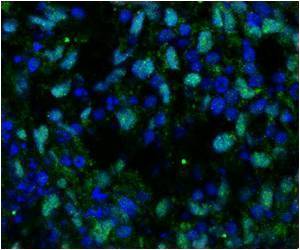A synthetic peptide carrier developed by Mayo Clinic researchers was able to transfer drugs through the blood-brain barrier.

The blood-brain barrier is meant to protect the brain from numerous undesirable chemicals circulating in the body, but it also obstructs access for treatment of brain tumors and other conditions. Too often the only recourse is invasive, which often limits a drug's effectiveness or causes irreversible damage to an already damaged brain. Nearly all of the drugs that could potentially help are too large to normally pass through the barrier. Additionally, other methods may damage the vascular system.
In this case, the synthetic peptide K16ApoE, once injected into a vein, binds to proteins in the blood to create entities that can pass for near-normal ligands to some receptors present on the blood-brain barrier. The 'pseudo-ligand' receptor interaction creates what the researchers believe to be transient pores through which various molecules can be transported to the brain. The molecules they've transported in this manner include cisplatin, methotrexate, cetuximab, three different dyes, and synthetic peptides Y8 and I-125. The researchers believe this is the least complicated, least expensive and most versatile method for delivering therapeutics to the brain. Previously, the researchers delivered antibodies targeted against amyloid plaques into the brains of mouse models of Alzheimer's disease using this same method.
"We know that some chemotherapeutic agents can kill brain tumor cells when they are outside the brain (as in a laboratory test). But because the agents cannot cross the blood-brain barrier, they are not able to kill brain tumor cells inside the brain. With the peptide carrier, these agents can now get into the brain and potentially kill the tumor cells," says Mayo neurology researcher Robert Jenkins, M.D., Ph.D., senior author of the study.
The researchers say their method, which has been successfully demonstrated in mice, meets three of five requirements for a usable therapy: It's feasible as a repeated procedure; it should be relatively easy to introduce into medical practice; and it would work for any size or location of brain tumor. More research will need to be done to prove effectiveness and determine any adverse effects.
Advertisement









